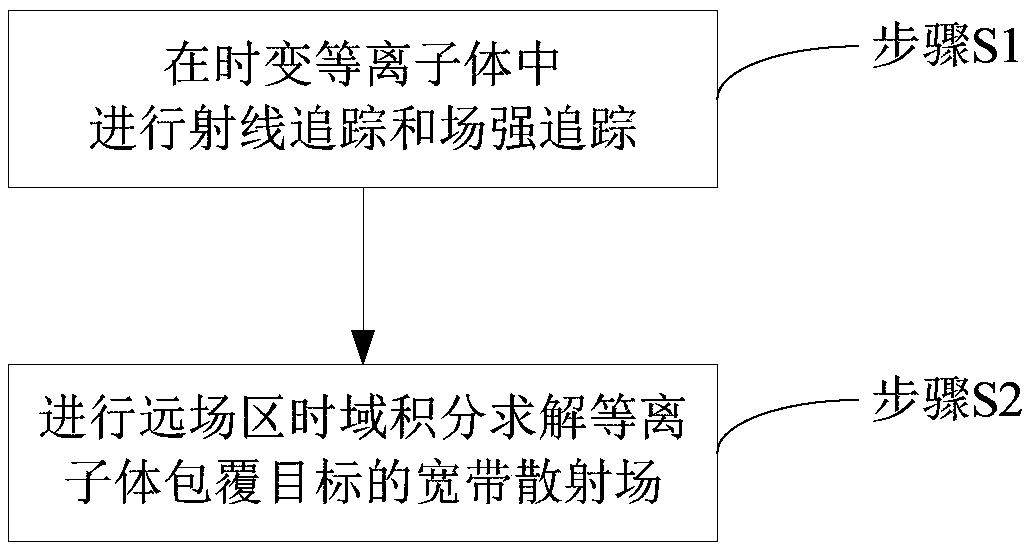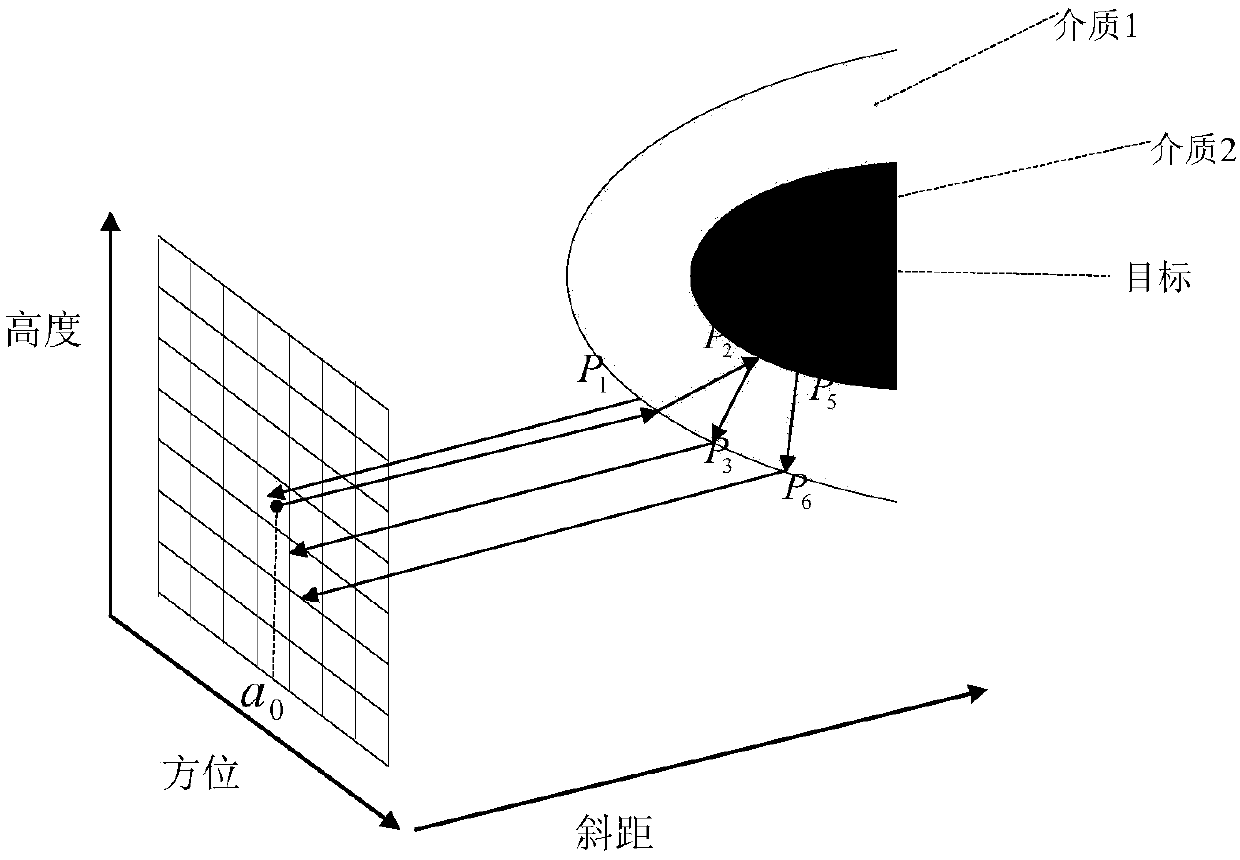Plasma electromagnetic scattering modeling method based on time domain shooting and bouncing rays method
A bouncing ray method and plasma technology, applied in the field of plasma electromagnetic scattering modeling, can solve the problems of not considering the influence of non-uniform characteristics, unable to solve the large size of electricity, and unable to realize fast modeling of broadband scattering
- Summary
- Abstract
- Description
- Claims
- Application Information
AI Technical Summary
Problems solved by technology
Method used
Image
Examples
Embodiment Construction
[0076] based on the following Figure 1 to Figure 5 , specifically explain the preferred embodiment of the present invention.
[0077] Such as figure 1 As shown, the present invention provides a plasma electromagnetic scattering modeling method based on the time-domain bouncing ray method, comprising the following steps:
[0078] Step S1, performing ray tracing and field intensity tracing in the time-varying plasma;
[0079] Determine the virtual aperture surface according to the pitch angle, azimuth angle and target shape information, project rays from the virtual aperture to the target area, use the rays to simulate the propagation process of electromagnetic waves in the time-varying plasma, recursively trace the rays, and obtain the rays on the target The multiple reflection intersection information of the area (such as figure 2 shown), and trace the field intensity along the ray path to obtain the electric field information of each intersection point of the ray in the ...
PUM
 Login to View More
Login to View More Abstract
Description
Claims
Application Information
 Login to View More
Login to View More - R&D
- Intellectual Property
- Life Sciences
- Materials
- Tech Scout
- Unparalleled Data Quality
- Higher Quality Content
- 60% Fewer Hallucinations
Browse by: Latest US Patents, China's latest patents, Technical Efficacy Thesaurus, Application Domain, Technology Topic, Popular Technical Reports.
© 2025 PatSnap. All rights reserved.Legal|Privacy policy|Modern Slavery Act Transparency Statement|Sitemap|About US| Contact US: help@patsnap.com



